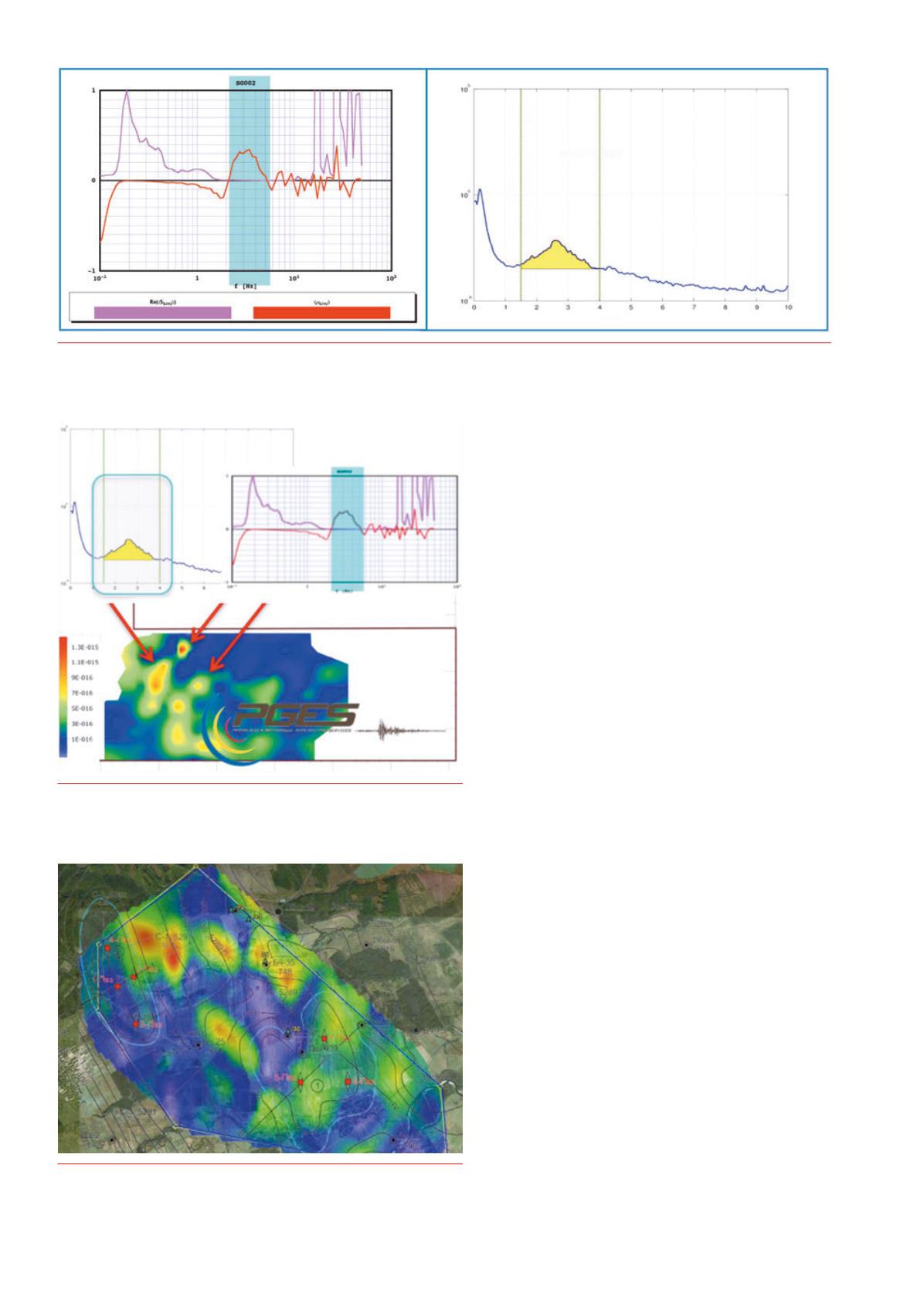
24 |
Oilfield Technology
May
2015
The IPSS investigation method is based on the natural seismic
background noise modification inducted by a hydrocarbon reservoir.
The transfer function of that behaviour presents a dominant
characteristic in a bandwidth within ~1 - 6 Hz.
The main reasons for the above-mentioned spectral
modifications are extensively explained by mesoscopic models and
are related to the multiphase seismic systems behaviour when are
invested by the background seismic energy in a form of seismic waves
with different frequencies and then different wavelengths.
This effect, in a permeable rock, differs from that in a purely
elastic solid because of the presence of pore fluid where the velocity
and normalised attenuation 1/Q of the fast compressional wave are
function of frequency ƒ (Biot’s theory)
Both, attenuation and velocity dispersion, are found to obtain
their maximum values near some frequency ƒ0. at which the Biot
slow-wave attenuation equals the mean inhomogeneity.
The background seismic energy induces micro fractures too
in sub-zones or layers as well, which contain high pressure fluids.
Such events can be analysed in the time domain in order to find the
sources and extract a distribution of the velocity model, which is
discussed in more detail later.
From a spectroscopic point of view, a potential reservoir’s
behaviour is like interfaces, which act over the general seismic
background signal, outputting a modified transfer function within a
particular frequency bandwidth.
A reservoir’s spectral characteristics are identified in terms of low
frequency spectral anomalies, which are the outcome of wave-field
absorption in presence of hydrocarbon-saturated media.
The background seismic behaviour is modified within 1 - 6 Hz
in presence of hydrocarbon, or multiphase systems, which are
contained in porous media.
In the seismic background noise, the increasing of the seismic
energy within the above-mentioned bandwidth is given by:
Ì
Ì
Seismic waves which pass through a high compressibility
(i.e.: hydrocarbon, saturated rock) to low compressibility rocks.
Ì
Ì
Fluid migration inside pores or fractures generates stress on
micro fractures resulting in a release of seismic energy in the
form of elastic waves or seismic micro events observable and
measurable from the surface.
In other words, seismic waves originating from the seismic
background noise of the earth are modified in a different way when
they penetrate geological structures containing hydrocarbons
Figure 1.
Two examples of background seismic noise in terms of seismic power spectradensity (PSD) acquired over two hydrocarbon reservoirs.
The first pick at 0.25Hz represents the noise contribution, which comes fromthe ocean over the backgroundnoise. The ocean is always visible at the
same frequency all over theworld. The earth background seismic anomaly, which comes fromthe presence of apotential hydrocarbonpresence in
porousmedia, is localisedwithin the blue (left side figure) and yellowarea (right side) within 1 – 6Hz.
Figure 2.
Two examples of background seismic noise in terms of seismic
power spectradensity (PSD) acquired over two hydrocarbon reservoirs and
the Iso-Energy distribution over the acquisitionblockwhich contains the
potential hydrocarbon saturatedmedia.
Figure 3.
Examples of a low frequency (1 - 7Hz) hydrocarbondistribution
over a reservoir overlappedwith all the iso-lines fromseismic interpretedas
structural closures.


